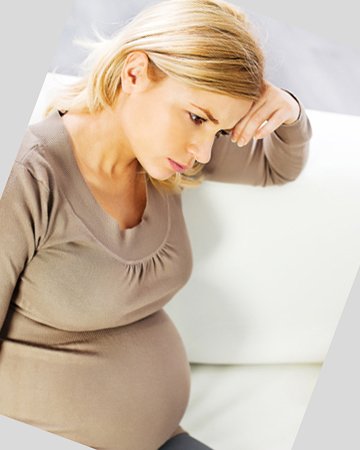 During pregnancy a woman undergoes many physiological changes. As your body expands to accommodate the needs of your growing baby, you may experience pain. Studies have found that 50-70% of pregnant women experience low back pain, especially during the late stages of pregnancy. Here are some of the likely causes of your back pain:
During pregnancy a woman undergoes many physiological changes. As your body expands to accommodate the needs of your growing baby, you may experience pain. Studies have found that 50-70% of pregnant women experience low back pain, especially during the late stages of pregnancy. Here are some of the likely causes of your back pain:
- Weight Gain. During a healthy pregnancy, women typically gain between 25 and 35 pounds. The spine has to support that weight, which can cause lower back pain. The weight of the growing baby and uterus also puts pressure on the blood vessels and nerves in the pelvis and back.
- Posture changes. Pregnancy shifts your center of gravity. As a result, you may gradually — even without noticing — begin to adjust your posture and the way you move. This may result in back pain or strain.
- Hormone changes. During pregnancy, your body makes a hormone called relaxin that allows ligaments in the pelvic area to relax and the joints to become looser in preparation for the birth process. The same hormone can cause ligaments that support the spine to loosen, leading to instability and pain.
- Muscle separation. As the uterus expands, two parallel sheets of muscles (the rectus abdominis muscles), which run from the rib cage to the pubic bone, may separate along the center seam. This separation may worsen back pain. In addition, stretching of other abdominal muscles, specifically the transversus abdominus, creates further weakness and a decreased ability to support the lower back.
- Stress. Stress can cause muscle tension in the back, which may be felt as back pain or back spasms. You may find that you experience an increase in back pain during stressful periods of your pregnancy.
Although pregnant women are restricted in the use of pain medication there are simple ways you can alleviate your pain at home. Consider these tips:
Tip #1
Practice good posture. Here are five easy steps to improve your posture:
- Lift through the crown of the head and keep the chin tucked slightly.
- Draw the shoulders and shoulder blades back and down while gently lifting the chest and rib cage.
- Contract abdominal muscles to support your baby and tuck the pelvis under to flatten the back.
- Keep a slight bend in the knees to avoid straining joints.
- Distribute body weight over the center of each foot.
Tip #2
Sit, don’t slouch. Slouching strains your spine so using proper posture when working, sitting, or sleeping will help alleviate back pain. For example, when sitting at a desk, place a rolled-up towel behind your back for support; rest your feet on a stack of books or stool and sit up straight, with your shoulders back. Wearing a support belt may also help.
Tip #3
Lift properly. When lifting a small object, squat down and lift with your legs. Don’t bend at the waist or lift with your back. It’s also important to know your limits. Ask for help if you need it.
Tip #4
Sleep on your side. Sleep on your side, not your back. Keep one or both knees bent. Consider using pregnancy or support pillows between your bent knees, under your abdomen and behind your back.
Tip #5
Try heat, cold or massage. Use a heating pad or ice packs, or heat and ice alternatively, to alleviate pain. A gentle massage is also a relaxing and beneficial way to ease your pain
Tip #6
Include physical activity in your daily routine. Regular exercise strengthens muscles and boosts flexibility which can ease the stress on your spine. Safe exercises for most pregnant women include walking, swimming, and stationary cycling. Your doctor or physical therapist can recommend exercises to strengthen your back and abdomen.
Finally, Tip #7
Consider physical therapy. If you are still experiencing pain or discomfort consider physical therapy as an effective and safe way to manage your pain. We can offer a variety of ways to make your pregnancy more comfortable.
What to Expect from Your Physical Therapy Appointment
Your physical therapist will perform a thorough evaluation, taking into account your medical history, symptoms and goals. Your physical therapist will also complete a physical exam, assessing posture, strength, and range of motion of your arms, legs, neck and trunk. Specific issues or concerns will be evaluated further. Then we will discuss your goals of therapy and establish an individualized plan of care to meet those goals. We emphasize education regarding the bodily changes that are occurring, safe activities to participate in, and tips to prevent many of the discomforts that can occur during pregnancy. The overall goal of physical therapy is to assist the new mother in having a comfortable and safe pregnancy, while actively preparing her for labor and delivery.
Discover the Peak difference!
For more information on physical therapy and pregnancy, visit the American Pregnancy Association.
Don’t see your issue listed? We address many physical therapy issues beyond what is featured on our website. Contact us for more information.